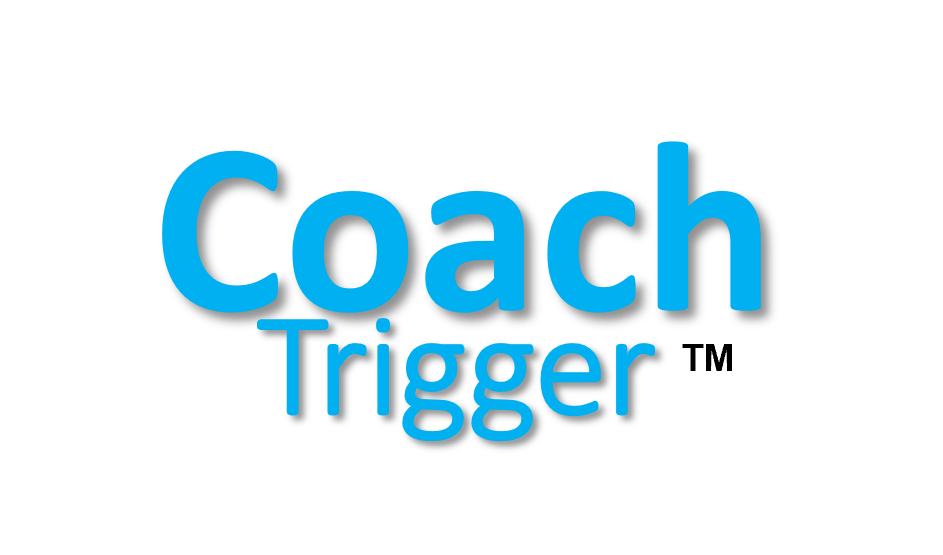The Role of a Coach in Enhancing Employee Productivity and Performance

According to the Gallup study, companies with engaged employees outperform their peers by an astounding 147%. This remarkable statistic underscores the profound impact that employee coaching can have on your organization’s success. As the need to improve employee morale and boost productivity continues to grow, the role of a coach in the workplace has become increasingly crucial.
Coaching employees refers to the guidance and support provided by individuals within your organization, with the primary goal of enhancing employee engagement, job satisfaction, and personal goal achievement, ultimately leading to increased productivity. The prime responsibility of a coach is to build confidence in your employees and set them on the right path, empowering them to excel in their roles.
By investing in employee coaching, you can unlock a wealth of benefits for your organization, from increased motivation and collaboration to improved communication and work-life balance. In this article, we’ll explore the essential steps to becoming a corporate fit as a coach, determining purpose and goals, analyzing strengths and weaknesses, and optimizing performance to drive sustainable growth and success.
Key Takeaways
- Employee coaching can lead to a 147% increase in business outcomes for companies with engaged employees.
- The role of a coach is to build employee confidence and set the right direction for their growth and development.
- Effective coaching can enhance employee engagement, motivation, and job satisfaction, leading to improved productivity and performance.
- Becoming a corporate fit as a coach requires understanding the organization’s culture, values, and industry dynamics.
- Setting clear goals, assessing current realities, and identifying areas for improvement are crucial steps in the coaching process.
Becoming a Corporate Fit as a Coach

As companies strive to enhance employee productivity and workplace efficiency, they are increasingly seeking coaches who can seamlessly integrate into their unique corporate culture. To become a true corporate fit, a coach must develop a deep understanding of the industry, the company’s vision, mission, and company values.
Understanding Organizational Culture
The first step for a coach is to immerse themselves in the organization’s corporate culture. By gaining insights into the company’s history, traditions, and the way it operates, the coach can better align their approach and communication style to resonate with the employees. This understanding of the organization’s culture will enable the coach to provide employee coaching that is tailored to the unique needs and preferences of the workforce.
Aligning with Company Values
Successful coaching in the workplace requires the coach to fully embrace the company’s core values. The coach must be able to articulate how their coaching methodology and philosophies seamlessly integrate with the organization’s mission and values. This alignment will not only build trust with the employees but also ensure that the coaching initiatives drive the desired workplace efficiency and employee productivity outcomes.
Determining Purpose and Goals
As a workplace coach, the first step is to lay down a solid foundation and set the grounds for the coaching sessions. Your primary focus should be on preparing the coachee to excel in their working environment and understanding the influence the individual has on the organization. By recognizing the performance goals, you can better support the coachee’s career development and employee performance.
Assessing Coachee’s Role and Responsibilities
The key to setting effective goals is to first understand the coachee’s role and responsibilities within the organization. You must recognize any hurdles they face in achieving their goals and identify areas where workplace coaching can make a significant impact.
Setting Realistic Goals
Once you have a clear picture of the coachee’s current situation, it’s time to collaborate on setting realistic goals. This involves assessing whether the goals are achievable and within the coachee’s control. Together, you should establish both short-term and long-term goals that align with the coachee’s performance optimization and overall career development aspirations.
Analyzing Strengths and Weaknesses

As a workplace coach, the next crucial step is to thoroughly understand your coachee’s current reality. This involves analyzing their employee performance, identifying their strengths and weaknesses, and recognizing areas that require skill development and continuous improvement. By gaining this valuable insight, you can tailor your workplace coaching approach to address the specific needs and challenges faced by the individual.
Identifying Current Reality
Begin by questioning the coachee about their current circumstances, work responsibilities, and any hurdles they face in achieving their goals. This open dialogue will provide you with a clearer picture of their performance assessment and the factors influencing it. Encourage the coachee to be honest and transparent about their strengths, weaknesses, and areas where they excel or struggle.
Recognizing Areas for Improvement
Armed with a deeper understanding of the coachee’s current reality, you can now identify specific areas that require attention and skill development. This could include improving communication skills, enhancing time management, or refining strategic decision-making. By collaboratively addressing these areas, you can help the coachee unlock their full potential and drive continuous improvement in their employee performance.
Performance Optimization
Additionally, coaching in the workplace can be a powerful tool for enhancing employee productivity and workplace efficiency. A skilled coach can provide valuable feedback and guidance to help your team members develop effective communication habits, such as active listening, thoughtful questioning, and constructive feedback.
By building these communication skills, your employees can forge stronger relationships with their colleagues, reduce conflicts, and foster a culture of teamwork. The coach can also facilitate team-building exercises and help your employees cultivate cultural sensitivity and empathy, all of which contribute to more effective collaboration and a heightened sense of shared purpose.
Developing Effective Communication
A talented coach understands the importance of clear and open communication in driving performance optimization. They can work closely with your employees to help them enhance their active listening abilities, learn to ask insightful questions, and provide feedback that is both constructive and empowering.
Promoting Collaboration and Teamwork
In addition to improving individual communication skills, a skilled coach can play a pivotal role in promoting collaboration and teamwork within your organization. By facilitating team-building activities and cultivating a culture of empathy and cultural sensitivity, the coach can help your employees develop a stronger sense of unity. This, in turn, can lead to more effective problem-solving, increased innovation, and a heightened sense of camaraderie among your team members.
Coaching for Personal and Professional Growth
As an employee, your personal development and professional development are crucial for your overall growth and success. A skilled coach can help you unlock your true potential by guiding you through the process of goal setting and action planning. By working closely with you, your coach can assist in identifying your unique strengths, weaknesses, and areas for skill development, empowering you to make meaningful strides in your career advancement.
Goal Setting and Action Planning
Your coach will collaborate with you to establish clear, achievable goals that align with your aspirations and the organization’s objectives. Together, you’ll create a detailed action plan that outlines the necessary steps to turn these goals into reality. This process will help you stay focused, motivated, and accountable, ensuring you make steady progress in your employee growth.
Skill Development
Through coaching, you’ll also have the opportunity to identify areas where you can enhance your skills and knowledge. Your coach will work with you to develop customized learning strategies, provide practical guidance, and help you acquire the necessary competencies to excel in your current role and prepare for future professional development.
Career Advancement Strategies
Lastly, your coach can also assist you in exploring career advancement opportunities within the organization. They can help you assess your personal development goals, identify potential growth paths, and devise strategies to position yourself for success. This may include providing insights on leadership skills, networking, and navigating the organizational structure to identify the right growth opportunities.
Measuring Success and Continuous Improvement

Effective performance management is crucial for any successful coaching program. By tracking progress and metrics, you can measure the impact of your coaching efforts and identify areas for continuous improvement. Regular feedback and adjustments to the coaching process can help ensure that your employees are fully engaged and satisfied with their work.
Tracking Progress and Metrics
Regularly assess the employee engagement and job satisfaction levels within your organization. Track key metrics such as productivity, absenteeism, and retention rates to gauge the success of your coaching program. Use this data to identify areas where your employees may need additional support or guidance.
Providing Feedback and Adjustments
Establish a feedback loop with your employees to gather their insights and provide regular feedback on their progress. This open communication can help you make adjustments to the coaching process as needed, ensuring that it remains aligned with your employee’s needs and the organization’s goals.
| Metric | Baseline | Target | Current |
|---|---|---|---|
| Employee Engagement | 75% | 85% | 82% |
| Job Satisfaction | 80% | 90% | 87% |
| Productivity | 90% | 95% | 93% |
| Retention Rate | 88% | 92% | 90% |
Continuously monitor your coaching program’s performance management and make adjustments as needed. By doing so, you can ensure that your employees are engaged, satisfied, and equipped with the tools and support they need to excel in their roles and contribute to the organization’s overall success.
Empower your Team to Achieve the Best Results with CoachTrigger
The article has provided a comprehensive overview of the crucial role of a coach in enhancing employee productivity and performance optimization. With CoachTrigger, you can foster a culture of employee productivity and workplace efficiency within your organization. Our intuitive platform empowers coaches to develop customized strategies, track progress, and provide targeted feedback to help your team reach new heights. CoachTrigger also has a team of coaches who can guide your team to excel in their careers. By leveraging the power of data-driven insights and proven coaching methodologies, CoachTrigger enables your employees to unlock their true potential and contribute to the overall success of your business.
Embrace the transformative power of employee coaching with CoachTrigger and witness the tangible benefits of a highly motivated and engaged workforce. Explore how CoachTrigger can empower your team today and start your journey toward a more productive, efficient, and thriving workplace. Click here






